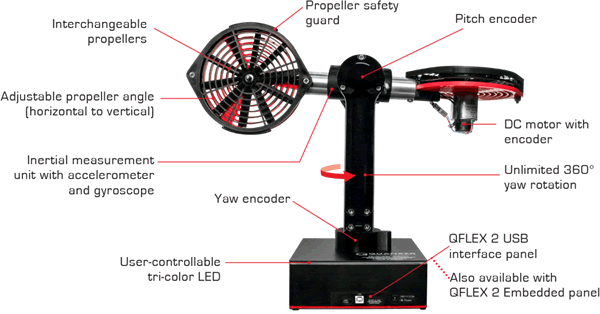ELEC483 - Quanser Aero
Introduction
The Quanser Aero experiment can be configured as a conventional dual-rotor helicopte r , as shown in Figure 1.1. The front rotor that is horizontal to the ground predominantly a f fects the motion about the pitch axis while the back or tail rotor mainly a f fects the motion about the yaw axis (about the shaft).

The tail rotor in helicopters is also known as the anti-torque rotor because it is used to reduce the torque that the main rotor generates about the ya w . Without this, the helicopter would be di f ficult to stabilize about the yaw axis. Because the rotors on the Quanser Aero Experiment are the same size and equidistant from each othe r , the tail rotor also generates a torque about the pitch axis. As a result, both the front and back/tail rotors generate a torque on each othe r .
Note: The dynamic coupling between the pitch and yaw axes is only seen when using the low-efficiency rotors . It is not witnessed with the high-e f ficiency rotors provided. See the Quanser Aero User Manual for more information about the two di f ferent types of rotors supplied.
Reference
[1] Quanser AERO Data Sheet, by Quanser Consultant Inc.
[2] Quanser AERO Quick Start Guide
.